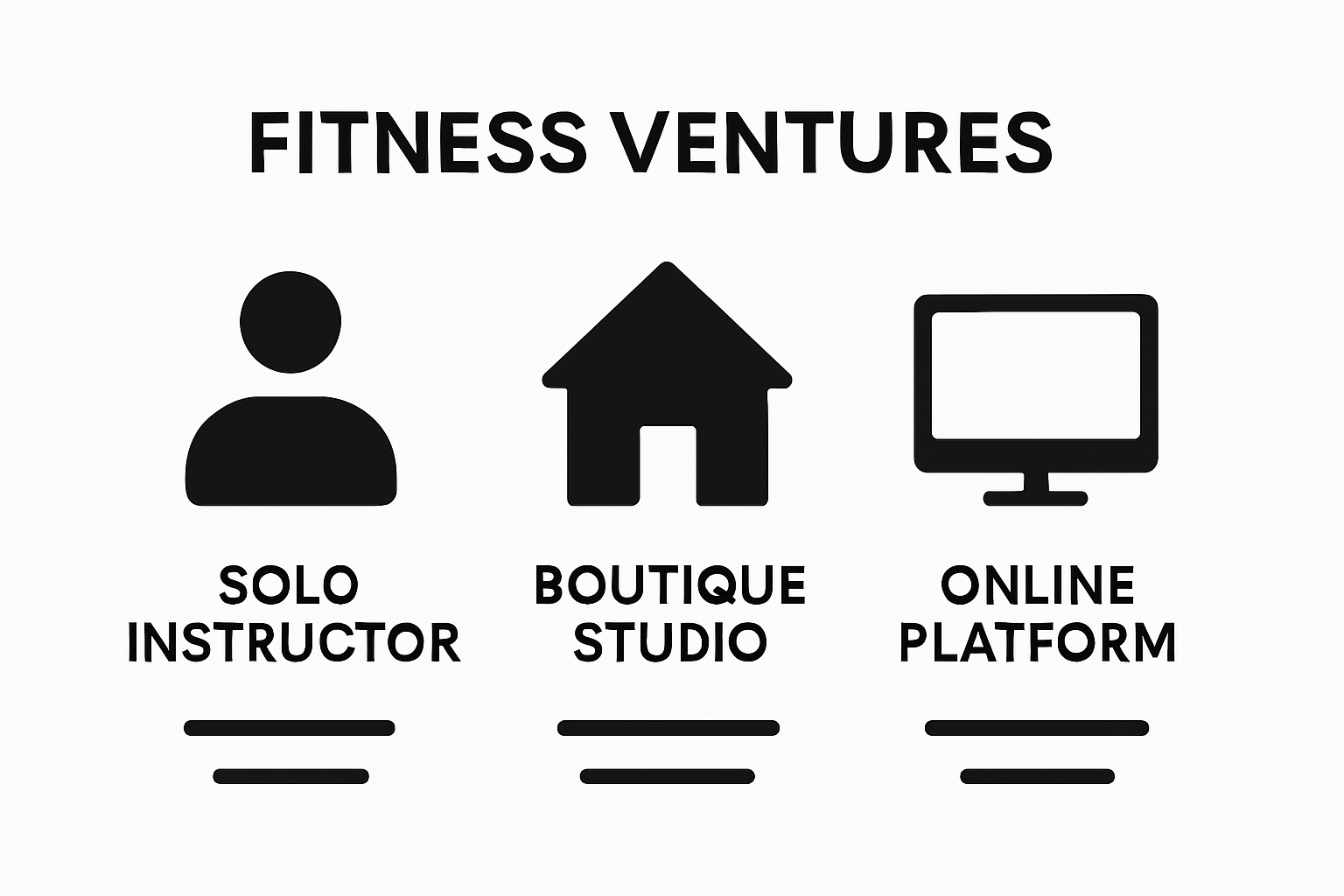Fitness professionals are moving away from scribbled timetables and endless phone calls to manage their classes. Surprisingly, over 80 percent of fitness studios now rely on digital class booking systems to handle registrations and streamline daily workflows. But the real shake-up is not just about saving time or cutting paper. The true impact is how these platforms are reshaping what clients expect, pushing the entire fitness industry into a new era of convenience and personalisation.
Table of Contents
Quick Summary
| Takeaway |
Explanation |
| Class booking systems are essential for fitness professionals |
They streamline scheduling, client management, and business operations, enhancing operational efficiency. |
| Cloud-based solutions offer flexibility and access |
Fitness instructors can manage bookings from any internet-connected device, reducing hardware costs and enhancing security. |
| Mobile apps enhance client interaction |
They allow seamless registration and management on-the-go, catering to modern consumer preferences for convenience. |
| Integrated website tools provide comprehensive management options |
These platforms help fitness businesses automate processes like scheduling and payment, offering a user-friendly experience. |
| Customised booking software allows tailored solutions |
This flexibility enables fitness studios to align the software with their unique operations and branding needs. |
1: Overview of Class Booking Systems
Class booking systems have transformed how fitness professionals manage their schedules, client interactions, and business operations. These digital platforms represent a critical technological advancement for instructors and studios seeking efficiency and enhanced client experiences.
At their core, class booking systems are sophisticated software solutions designed to streamline the entire process of scheduling, registering, and managing fitness classes. The Health & Fitness Association emphasizes that modern booking systems are no longer optional but essential for competitive fitness businesses.
The primary functions of these systems typically include:
- Automated class scheduling and availability management
- Online registration and payment processing
- Client communication and reminder systems
- Attendance tracking and reporting
- Membership management
Fitness professionals benefit from these systems in multiple ways. Digital booking platforms eliminate manual administrative tasks, reducing time spent on paperwork and phone communications. They provide real-time visibility into class occupancy, enabling better capacity planning and potential revenue optimization.
Moreover, these systems cater to contemporary consumer expectations. Modern clients demand convenience, preferring instant online booking capabilities over traditional registration methods. Mobile-friendly interfaces and seamless user experiences have become standard requirements for fitness class providers.
Key considerations when selecting a class booking system include integration capabilities, user interface simplicity, payment processing security, and scalability. The right system should not just manage bookings but serve as a comprehensive business management tool that supports growth and enhances operational efficiency.
As fitness industries continue evolving, class booking systems will undoubtedly become increasingly sophisticated, incorporating advanced features like AI-driven recommendations, comprehensive analytics, and more personalized client engagement tools.
2: Cloud-Based Booking Systems
Cloud-based booking systems represent a revolutionary approach to managing fitness class schedules and client interactions. Unlike traditional software installations, these platforms operate entirely online, providing unprecedented flexibility and accessibility for fitness professionals.
Research from the International Journal of Environmental Research and Public Health demonstrates that cloud computing offers transformative benefits for service-based industries, particularly in scheduling and resource management.
The fundamental advantages of cloud-based booking systems include:
- Instant access from any device with internet connectivity
- Automatic data synchronization and backup
- Reduced hardware maintenance requirements
- Scalable infrastructure that grows with your business
- Enhanced security protocols for client information
Cloud platforms eliminate the need for physical server infrastructure, dramatically reducing technology costs for fitness studios. Instructors can manage their entire booking process from smartphones, tablets, or computers without complex software installations.
Data security represents another critical benefit. Cloud systems employ advanced encryption technologies that protect sensitive client information more effectively than traditional local storage methods. Automatic backups ensure that class schedules, payment records, and client details remain safe and recoverable.
Fitness professionals gain significant operational advantages through cloud-based solutions. Real-time updates allow instant modification of class availability, pricing, and scheduling. Clients can book classes, receive confirmations, and manage memberships seamlessly across multiple platforms.
When selecting a cloud-based booking system, fitness instructors should consider integration capabilities, user interface design, and customer support quality. The ideal platform should offer intuitive navigation, comprehensive features, and reliable technical assistance.
As technology continues evolving, cloud-based booking systems will likely incorporate more advanced features like artificial intelligence, predictive analytics, and increasingly personalized client experiences. These innovations promise to make class management more efficient and responsive to individual studio needs.
3: Mobile App Booking Solutions
Mobile app booking solutions have revolutionized how fitness professionals interact with clients, providing seamless, on-the-go scheduling and management capabilities. These sophisticated applications transform smartphones into powerful administrative tools for class registration and studio management.
Research published in Frontiers in Sports and Active Living emphasizes the critical role of user-centric design in mobile fitness applications, highlighting the importance of intuitive interfaces and robust functionality.
Key features of advanced mobile booking applications typically include:
- Instant class registration and waitlist management
- Real-time schedule synchronization
- Push notification reminders
- Secure payment processing
- Personal profile and membership tracking
Mobile apps provide unprecedented convenience for both fitness instructors and clients. Instructors can manage their entire business ecosystem directly from their smartphone, while clients enjoy the flexibility of booking classes anytime, anywhere.
The technological sophistication of these applications extends beyond basic booking functionalities. Advanced mobile solutions integrate multiple business processes, including attendance tracking, revenue management, and client communication. Some apps now incorporate artificial intelligence to offer personalized class recommendations based on user preferences and historical booking patterns.
Security represents a paramount consideration in mobile booking solutions. Robust encryption protocols protect sensitive client information, ensuring secure transactions and data privacy. Fitness professionals must prioritize apps with comprehensive security measures to maintain client trust and comply with data protection regulations.
When selecting a mobile booking application, fitness instructors should evaluate user experience, integration capabilities, and technical support quality. The ideal solution should offer a balance between comprehensive features and intuitive design, enabling smooth operational management without overwhelming users.
As mobile technology continues advancing, booking applications will likely incorporate more sophisticated features like augmented reality class previews, advanced analytics, and more personalized user experiences. These innovations promise to further streamline fitness class management and enhance client engagement.
Integrated website booking tools represent a sophisticated solution for fitness professionals seeking comprehensive digital management platforms. These web-based systems enable seamless class scheduling, client registration, and administrative management directly through a studio’s online presence.
Research from the National Center for Biotechnology Information highlights the transformative potential of intelligent digital platforms in fitness management, emphasizing their role in streamlining reservation and course selection processes.
Essential features of integrated website booking tools typically include:
- Customizable class calendars
- Secure online payment processing
- Automated client confirmation emails
- Real-time availability tracking
- Multi-device compatibility
Website booking tools eliminate traditional administrative barriers, providing fitness instructors with a powerful digital infrastructure for managing their classes. These platforms allow clients to book sessions, view schedules, and manage memberships without direct human intervention.
The most effective integrated booking tools offer seamless user experiences across multiple devices. Whether accessing the platform from a desktop computer, tablet, or smartphone, clients should encounter consistent, intuitive interfaces that simplify the booking process.
Security represents a critical consideration for website booking systems. Robust encryption protocols protect sensitive client information, ensuring secure transactions and maintaining client confidence. Fitness professionals must prioritize platforms that comply with data protection regulations and offer comprehensive security measures.
When selecting an integrated website booking tool, instructors should evaluate:
- Payment gateway integration
- Customization options
- Technical support quality
- Reporting and analytics capabilities
- Scalability for future business growth
Advanced website booking tools now incorporate sophisticated features like automated marketing integrations, client retention analytics, and personalized recommendation systems. These innovations transform booking platforms from simple scheduling tools into comprehensive business management solutions.
As digital technologies continue evolving, integrated website booking tools will likely become increasingly intelligent, offering more personalized experiences and predictive capabilities that support fitness professionals’ business growth and client engagement strategies.
Third-party booking platforms have emerged as powerful intermediaries connecting fitness professionals with potential clients, offering comprehensive solutions that extend beyond traditional booking mechanisms. These platforms provide fitness instructors with expansive digital marketplaces to showcase and sell their class offerings.
Research published in digital health studies highlights the transformative potential of third-party platforms in expanding client accessibility and engagement for fitness professionals.
Key characteristics of third-party booking platforms include:
- Centralized class discovery interfaces
- Integrated payment processing
- Client review and rating systems
- Comprehensive instructor profiles
- Cross-platform marketing capabilities
Third-party platforms democratize class discovery, enabling smaller studios and independent instructors to compete with larger fitness establishments. These digital marketplaces aggregate diverse fitness offerings, making it easier for clients to explore and select classes that match their preferences and fitness goals.
Advanced algorithmic matching helps clients find relevant classes based on location, skill level, class type, and personal fitness objectives. This intelligent recommendation system increases the likelihood of successful bookings and improves overall user experience.
Fitness professionals must carefully evaluate potential third-party platforms, considering factors such as:
- Commission rates and pricing structures
- Marketing and promotional support
- Technical integration capabilities
- Client data ownership policies
- Platform reputation and user base
While third-party platforms offer significant advantages, they also present challenges. Instructors sacrifice some control over their brand identity and may face higher transaction costs compared to independent booking systems. Successful utilization requires strategic platform selection and understanding of associated trade-offs.
As digital fitness ecosystems continue evolving, third-party booking platforms are likely to incorporate more sophisticated features. Anticipated innovations include augmented reality class previews, personalized fitness recommendations, and more advanced analytics to support instructor growth and client engagement.
6: Customised Booking Software
Customised booking software represents the pinnacle of technological innovation for fitness professionals, offering tailored solutions that precisely match individual studio requirements. These sophisticated platforms go beyond standard booking mechanisms, providing highly personalised digital ecosystems designed to streamline administrative processes and enhance client experiences.
Research investigating personalized fitness management systems demonstrates that customised software can significantly improve course participation and user engagement through intelligent, adaptive features.
Key advantages of customised booking software include:
- Comprehensive branding integration
- Advanced client segmentation tools
- Flexible pricing and membership models
- Detailed performance analytics
- Seamless third-party application integrations
Customisation allows fitness professionals unprecedented control over their digital infrastructure. Unlike generic booking platforms, these solutions can be precisely configured to reflect a studio’s unique operational workflow, aesthetic preferences, and specific business requirements.
Advanced customised booking systems incorporate intelligent features such as:
- Predictive class recommendations
- Automated client communication workflows
- Dynamic scheduling algorithms
- Personalized marketing campaign management
- Real-time capacity and resource optimization
Data security and privacy represent critical considerations in customised software development. Robust encryption protocols and comprehensive data management strategies ensure that sensitive client information remains protected while enabling sophisticated analytical capabilities.
Fitness professionals selecting customised booking software should evaluate potential solutions based on:
- Scalability potential
- Technical support quality
- Ongoing development commitment
- Integration complexity
- Total cost of ownership
The future of customised booking software lies in increasingly intelligent, machine learning-driven platforms that can anticipate client needs, automate complex administrative tasks, and provide predictive insights into business performance. These advanced systems will transform booking from a transactional process into a strategic business intelligence tool.
7: Hybrid Booking Systems
Hybrid booking systems represent an innovative approach that bridges traditional in-person booking methods with advanced digital technologies. These sophisticated platforms combine multiple booking channels, offering fitness professionals unprecedented flexibility in managing client interactions and class registrations.
Research from the Journal of Medical Internet Research highlights the transformative potential of integrated digital tools in enhancing user engagement and operational efficiency.
Key characteristics of hybrid booking systems include:
- Simultaneous online and offline booking capabilities
- Seamless data synchronization across platforms
- Integrated payment processing
- Flexible client communication channels
- Multi-device compatibility
Hybrid systems eliminate traditional booking limitations, enabling fitness professionals to capture bookings through multiple touchpoints. Clients can register for classes via smartphone apps, website platforms, in-person kiosks, or direct communication with studio staff.
The most effective hybrid booking solutions offer comprehensive integration across digital and physical platforms. This approach ensures that class availability, client information, and payment records remain consistently updated regardless of the booking channel used.
Critical considerations when implementing hybrid booking systems involve:
- Robust data synchronization mechanisms
- Consistent user experience across platforms
- Comprehensive staff training
- Scalable technological infrastructure
- Advanced security protocols
Technological flexibility becomes a significant competitive advantage for fitness studios adopting hybrid booking systems. These platforms allow instructors to adapt their booking processes to diverse client preferences, potentially expanding their customer base and improving overall accessibility.
As digital technologies continue evolving, hybrid booking systems will likely incorporate more advanced features such as artificial intelligence-driven recommendations, predictive scheduling, and more sophisticated client engagement tools. The future of fitness booking lies in creating seamless, intuitive experiences that transcend traditional technological boundaries.
Below is a comprehensive table summarising the seven main types of class booking systems for fitness studios, their features, and key benefits discussed throughout the article.
| System Type |
Core Features |
Key Benefits |
| Cloud-Based Booking Systems |
Online access; automatic data sync; scalability; enhanced security |
Flexibility, device-independent management, reduced costs |
| Mobile App Booking Solutions |
On-the-go registration; push notifications; secure payments |
Increased client convenience, personalised engagement |
| Integrated Website Tools |
Customisable calendars; secure payments; multi-device support |
Automated management via studio websites, user-friendly |
| Third-Party Platforms |
Digital marketplace; ratings; cross-platform marketing |
Broader reach, client discovery, algorithmic recommendations |
| Customised Booking Software |
Branding integration; advanced analytics; flexible pricing |
Fully tailored to business needs, high operational control |
| Hybrid Booking Systems |
Online/offline booking; data synchronisation; flexible access |
Simultaneous multi-channel integration, broader client reach |
| General Booking System Overview |
Scheduling; payments; communication; attendance; memberships |
Streamlined admin, improved planning, enhanced client experience |
Elevate Your Fitness Studio with Streamlined Booking
Finding the right class booking system is key to reducing stress and increasing profits for fitness professionals. The article highlighted common frustrations such as manual scheduling, payment troubles, and missed opportunities for client retention. With so many solutions on the market, it can feel overwhelming to pick a tool that truly supports both your ambitions and your clients’ expectations.
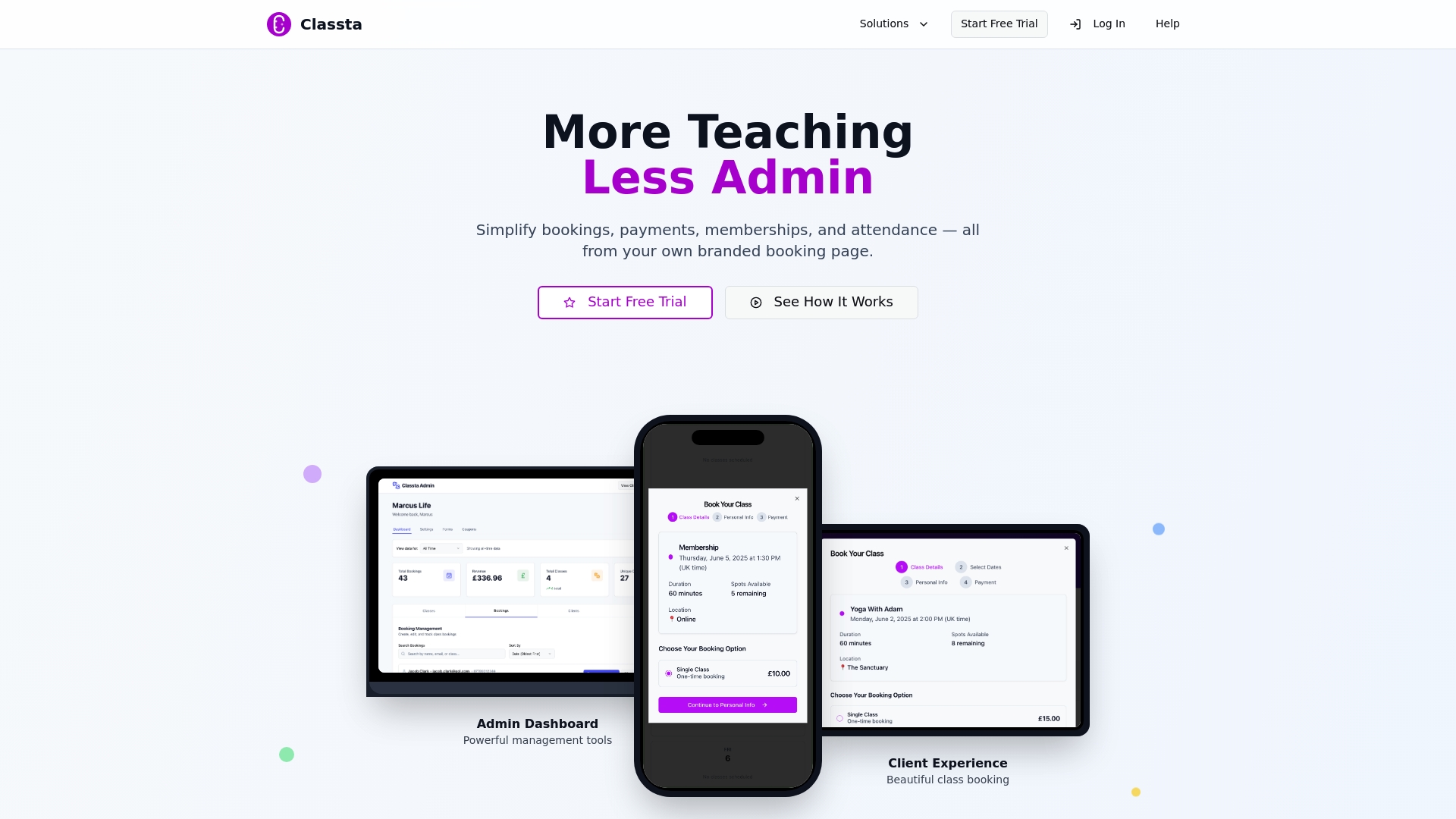
Why settle for piecemeal solutions when you can transform your business today? Explore how Classta’s all-in-one platform supports yoga, pilates, martial arts, and dance instructors in managing bookings, payments, memberships, and attendance with ease. Experience branded booking pages, AI-powered tools and automated reminders tailored to your unique needs. Visit Classta.co now to take the stress out of scheduling and discover how secure automation can help you grow. Join the many instructors already simplifying their daily operations and let your focus return to what matters most—your clients.
Frequently Asked Questions
What are the main functions of class booking systems for fitness studios?
Class booking systems typically include automated class scheduling, online registration and payment processing, client communication, attendance tracking, and membership management, enhancing efficiency for fitness professionals.
How do cloud-based booking systems benefit fitness studios?
Cloud-based booking systems offer instant accessibility from any device with internet connectivity, automatic data synchronisation, reduced hardware maintenance, scalability, and advanced security protocols for client information.
What features should I look for in mobile app booking solutions?
When evaluating mobile app booking solutions, consider features such as instant class registration, real-time schedule synchronisation, push notification reminders, secure payment processing, and personalised profile management.
How do hybrid booking systems enhance client interactions for fitness studios?
Hybrid booking systems allow for simultaneous online and offline bookings, providing flexibility in client interactions and enabling fitness professionals to capture bookings through multiple channels, thus improving client accessibility.










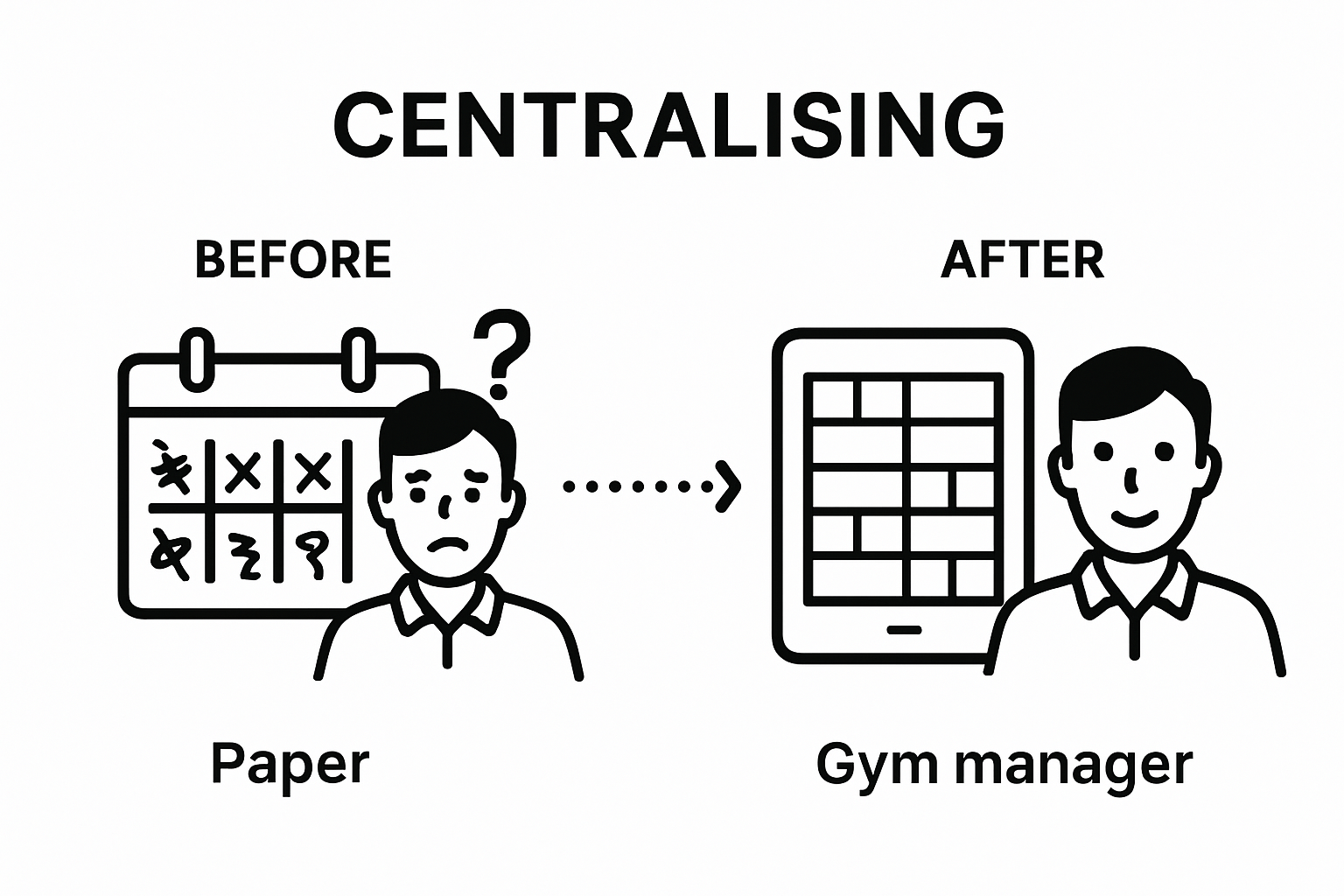
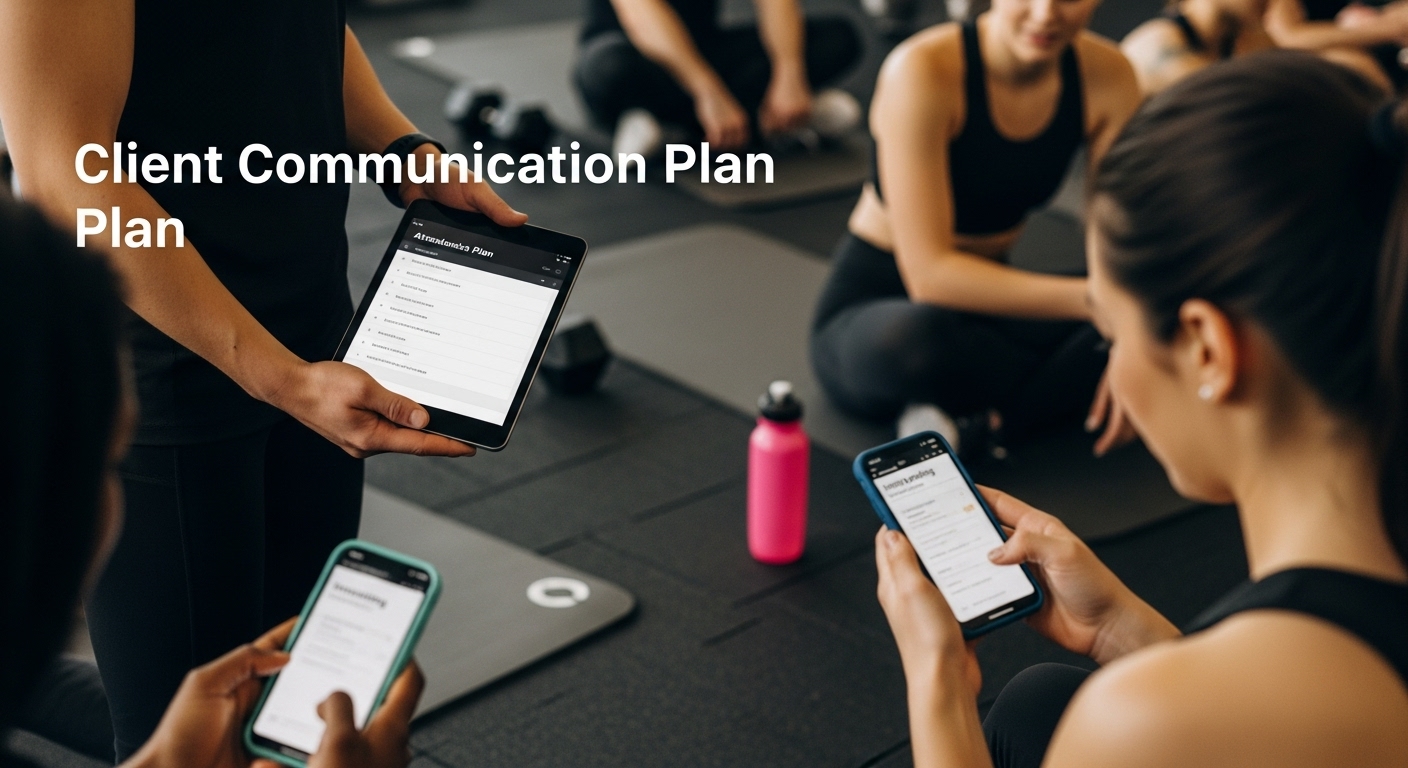

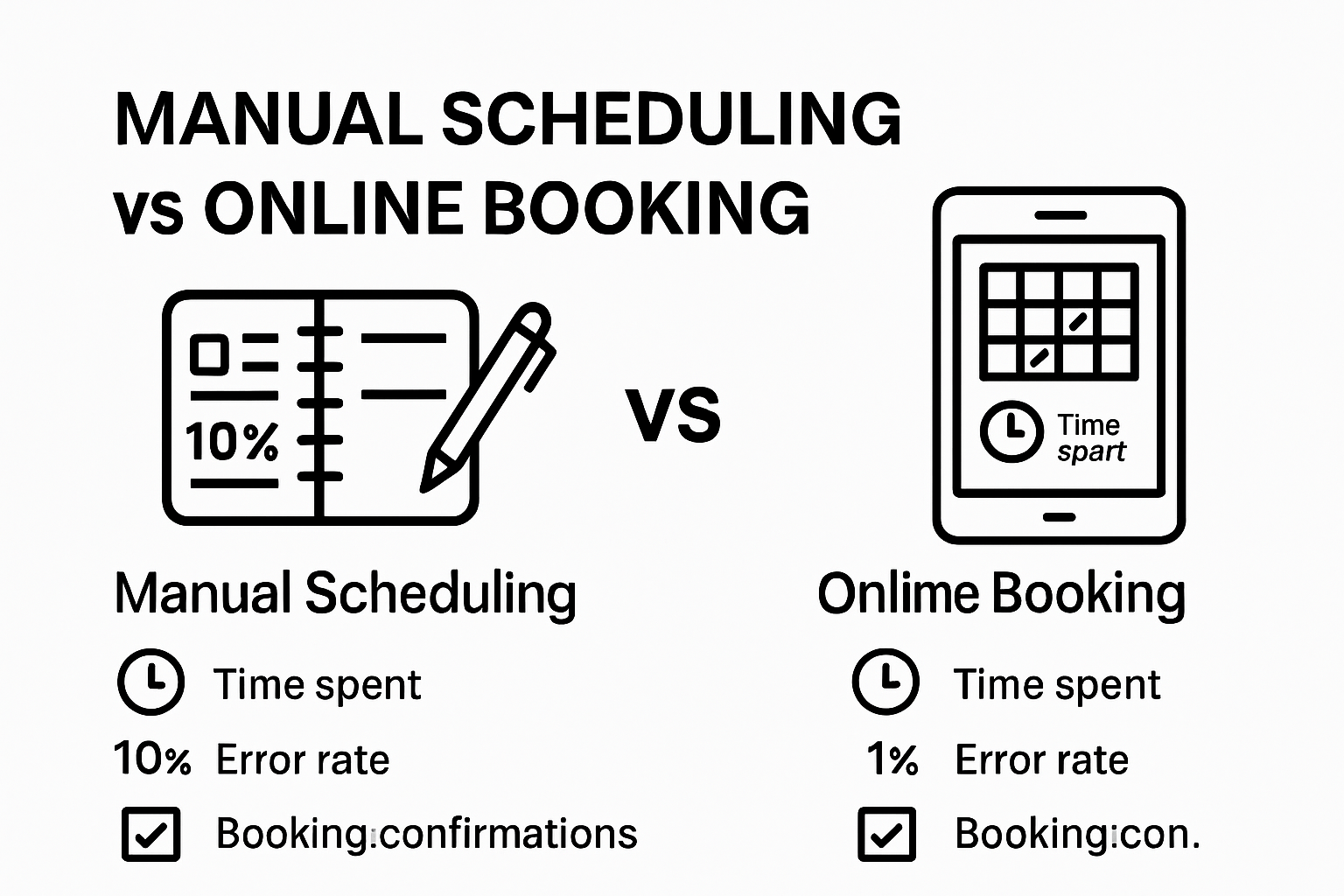
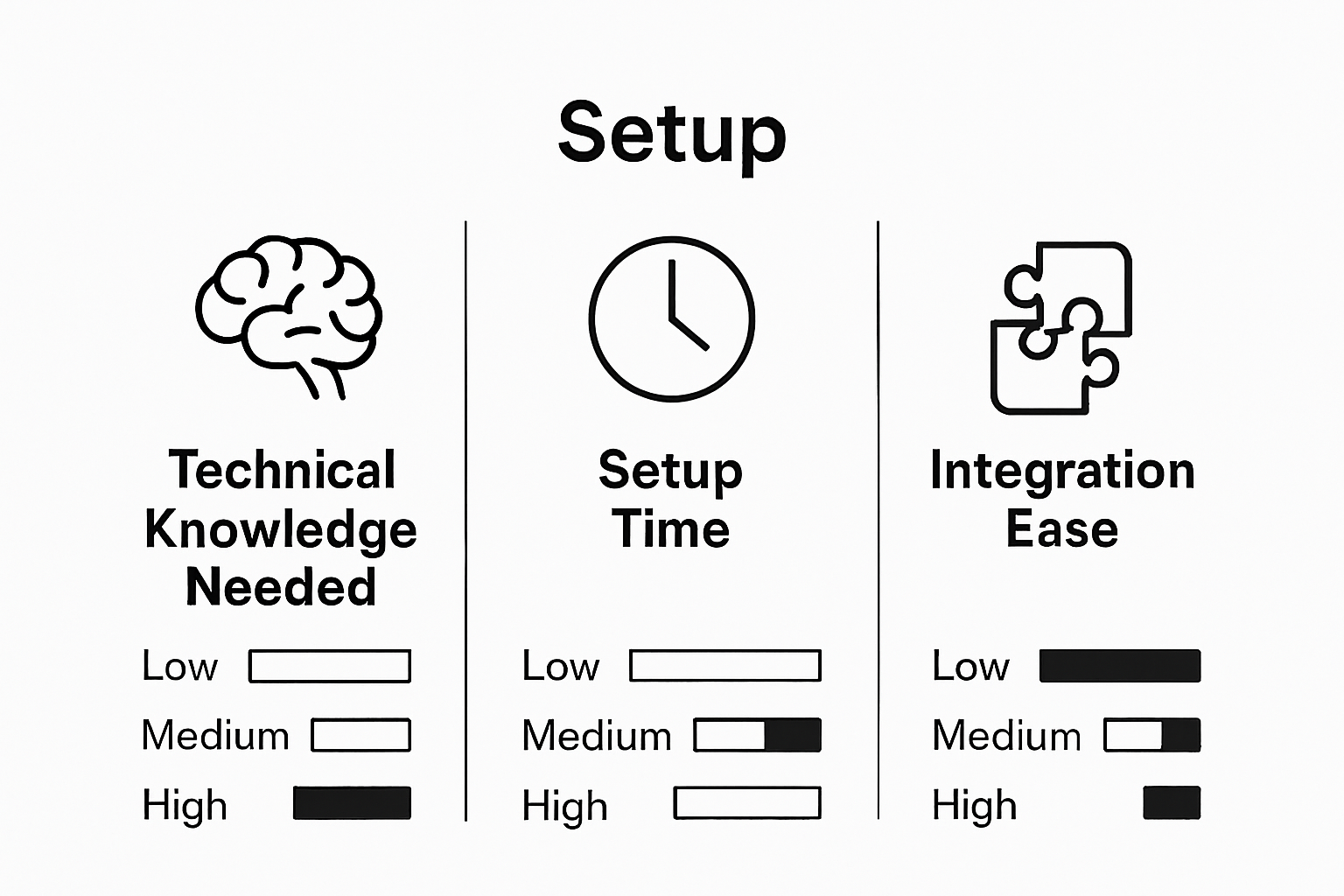

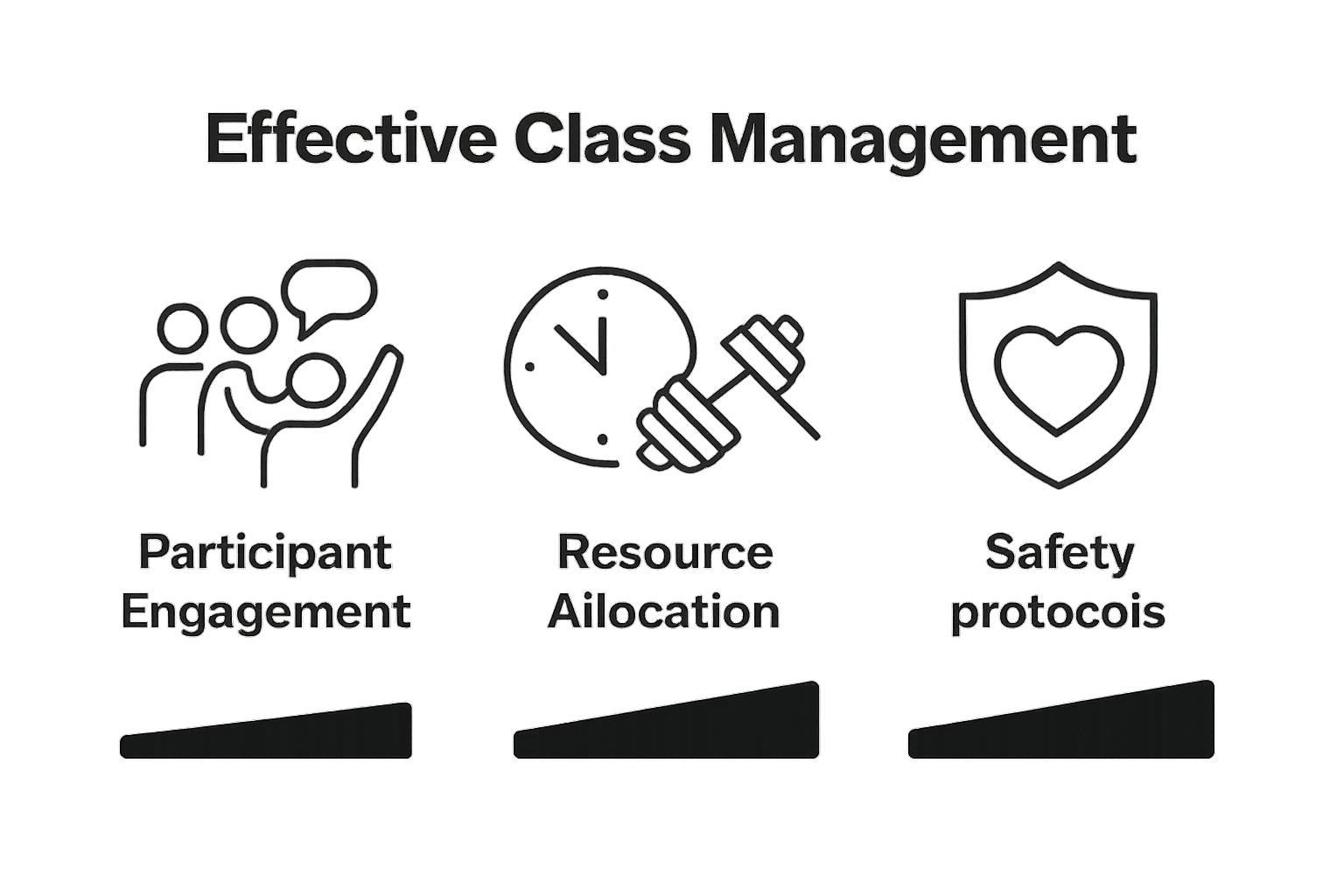 :
:
